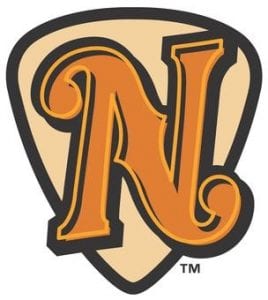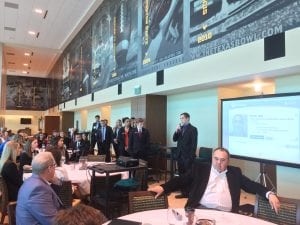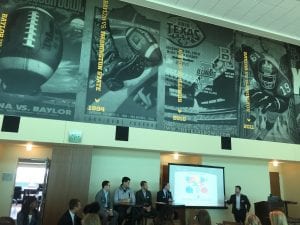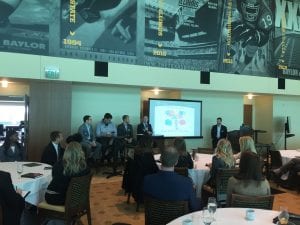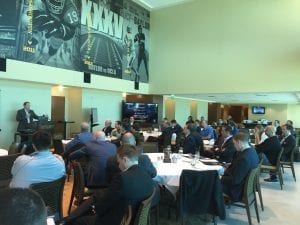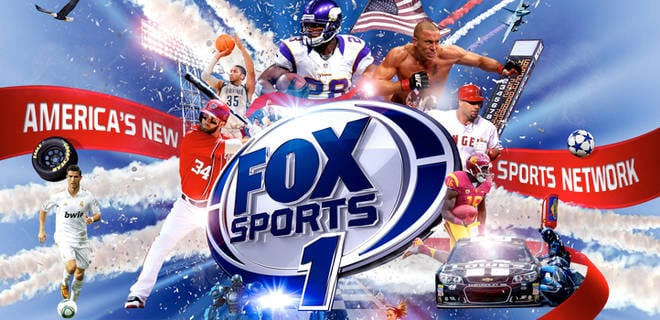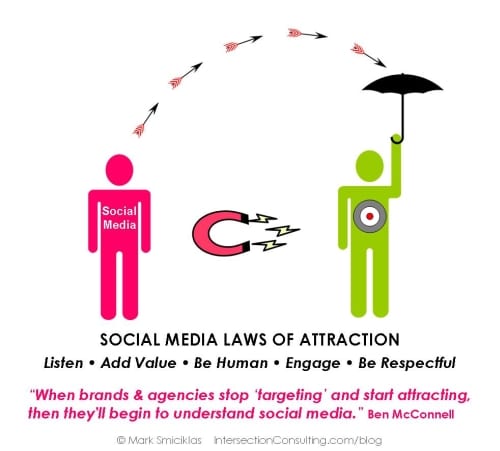by Don Roy – December 2014
John Stuart, former chairman of Quaker Oats, said “If this business were to be split up, I would be glad to take the brands, trademarks and goodwill and you could have all the bricks and mortar – and I would fare better than you.”
The really valuable asset any company (or person) owns is the brand. The brand of the team and corporate partners is what we market, by creating awareness, building associations, achieving preference, and influencing purchase behavior.
It’s Not Yours
John Stuart’s quote is poignant, but unfortunately misguided. Does the marketer own the brand? Sure, a firm has legal rights to its brand name and marks. But, who really owns the brand?
Your brand is owned in the hearts and minds of people in the world around you, namely your customers and product users. Key dimensions of the brand are:
- Brand image–a collection of perceptions. Where do those perceptions reside? In the minds of (non)customers.
- Brand experience–an interactive consumption engagement. Who is the central figure? The customer, without whom there is no experience.
- Brand relationship–without customers there are no relationships and no brand.
- Brand identity– how the company wants its brand, logo, marks and visual representations to be perceived by customers.
Companies design brand identities in hopes that customers and other stakeholders will have a strong sense of ownership based on the brand’s image, experience, and relationship.
Nashville Sounds Learn this Branding Lesson
The Nashville Sounds (AAA) have field a baseball team in thee Music City for nearly 40 years, calling Greer Stadium its home from 1978 to 2014. Next season, the Sounds begin play at First Tennessee Park, a modern facility built on the same grounds upon which Negro League and minor league baseball was played as far back as the late 1800s. In addition, 2015 will mark the beginning of a new affiliation agreement with the Oakland A’s.
The timing for updating the Nashville Sounds brand seemed ideal given the transition to a new stadium and new major league affiliation. So, team management unveiled an updated logo in October. The Sounds hired Brandiose, a San Diego-based branding agency. Eleven months of work went into the new logo.
Public reaction to the new logo has not been very positive. Why abandon red, a color used by the Sounds throughout its existence? Why use orange, a color better known and associated with the University of Tennessee? Why hire an out-of-state agency when Nashville has abundant creative talent among numerous agencies in the city? Is that the best that someone could do after 11 months of work? Why does it bear resemblance to a logo used by one of Nashville’s other professional sports teams (the Nashville Predators have a secondary logo featuring a guitar pick design)? The questions shared an underlying sentiment: Changes to our brand are in conflict with our relationship to the Nashville Sounds.
It’s about Community
 The Nashville Sounds organization is not the first to make missteps with a rebranding effort.For example, in 2010, Gap introduced an updated logo that lasted about one week before the public made their displeasure known. The company listened and brought back the old logo as Gap’s identity.
The Nashville Sounds organization is not the first to make missteps with a rebranding effort.For example, in 2010, Gap introduced an updated logo that lasted about one week before the public made their displeasure known. The company listened and brought back the old logo as Gap’s identity.
The backlash faced by the Nashville Sounds, while not nearly as intense, carries the same lesson. Brands matter to people. They form community with others who care.
Perhaps the worst outcome of the Nashville Sounds rebranding would have been if no one voiced opinions for or against the new logo. People complained because they cared, and they care because they feel a connection to the brand.
Brands are owned in the hearts and minds of the people that they touch. Marketers are the stewards of brands, managing the four dimensions (identity, image, experience, and relationship) to maximize their value. The takeaway from the Nashville Sounds rebranding is not that brand changes should be put to a vote — community is different from democracy. Internal decisions can have negative, albeit unintended, effects on brand relationships. Brand owners and brand marketers must appreciate the affinity customers and fans have for a brand carefully manage the process to maintain a positive relationship between the brand and customers.



